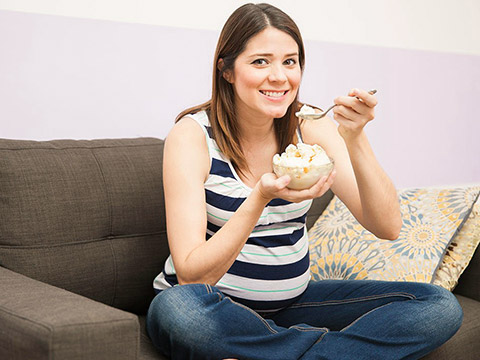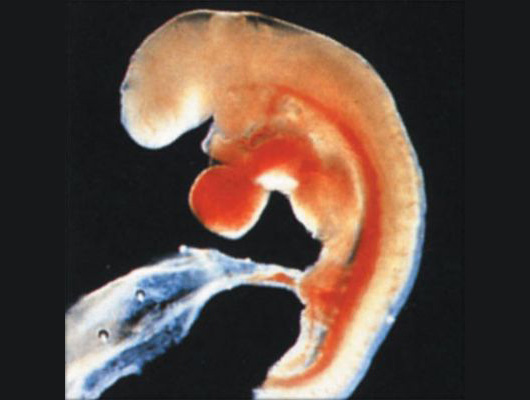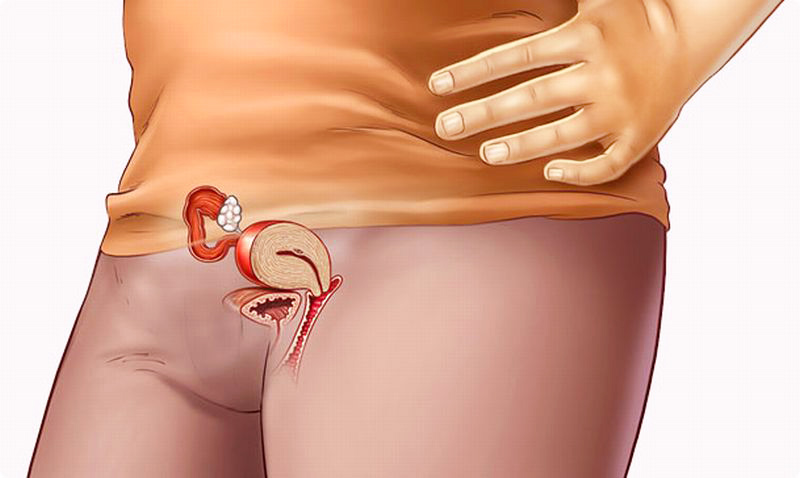Introducing solids
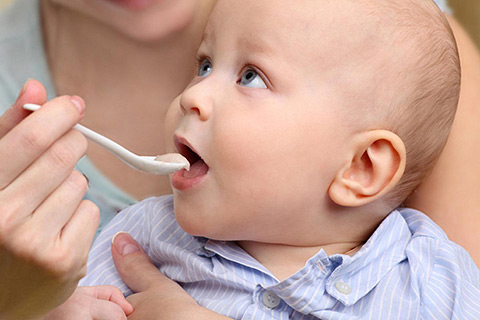 How exciting it is when your baby is ready for solid food! This fact sheet will help you know when and how to start feeding solid foods. You will also be able to help your infant make the change to table food as she grows into her toddler years.
How exciting it is when your baby is ready for solid food! This fact sheet will help you know when and how to start feeding solid foods. You will also be able to help your infant make the change to table food as she grows into her toddler years.
When is the right time?
Some parents are very anxious for their babies to eat solid food. But it’s important to wait until your baby is ready for this change in diet. Your baby will “tell” you that he’s ready for more than just breast milk or formula by doing the following: She can sit up and hold her head steady. She drools when hungry. She opens her mouth when she sees the spoon approaching. She doesn’t push the spoon out with her tongue. Most babies are ready for solid food between four and six months of age. Before this time, breastmilk or iron-fortified infant formula meets all of her nutritional needs.
First food. How to feed your infant
Your baby’s first food needs to be easy to digest and not likely to cause an allergic reaction. Iron-fortified infant rice cereal mixed with breast-milk or formula is the best first food. Be sure to start out with a very thin “soupy” mixture at first. You may want to hold your baby the first few times you feed her with a spoon. This will help to comfort her. Be aware that she may gag or refuse the food the first couple of times. That’s okay. Just try again another day. Soon she’ll be enjoying the new taste and texture of the rice cereal.
Doctors say a good way to start is to pick a time of day when your baby is not tired or cranky and sit her upright or on your lap. Also, you can give her something to focus on, such as a toy, so you can get a spoonful of food into her mouth. Place the spoon close to your baby’s lips and let her smell and taste. She may reject it at first. This is normal. Wait a little bit and try again. After the first feeding, you can use the same cereal, increasing quantity and frequency. Wait a few days before you move on to another cereal (such as barley).
Once baby is used to infant cereal, at about six to seven months of age, you can start adding other new foods to her diet, one at a time. Be sure to wait two to three days between new foods. This will let you watch for any signs of an allergic reaction. Here are some possible signs that may indicate an allergic reaction:
- stomachache,
- diarrhea,
- skin rash,
- runny nose or eyes,
- bloating of the stomach of increased intestinal gas.
It is important to try out each food patiently to see if your child can handle it.
It is important to feed infants baby food by spoon only. This will teach the infant the right way to eat solid foods.
Many parents start to give their infants mashed up banana, small pieces of chicken and meat or scrambled eggs when their infants reach 8 months or so. Parents must always be careful in preparing foods: Make sure the food is chopped well and served in small pieces no larger than ¼ inch. Also make sure that the food is soft. Encourage your child to pick up the food on her own. Finger feeding helps infants learn to grasp and release objects, hand-to-mouth coordination.
Fruits and Veggies
The first foods after rice cereal are fork-mashed or commercial baby food fruits and vegetables (not mixed dinners yet). Be sure to provide fruits and veggies that are easy for baby to eat, like mashed banana or squash. Offer a variety of different fruits and vegetables, but be sure to provide them one at a time. Look for signs of an allergic reaction between foods.
Avoid giving your baby a lot of any one type of fruit or vegetable. Give her dark green and deep yellow or orange vegetables no more than every other day, or you might have a yellow-tinted baby! Also, limit beets, carrots, and spinach to one or two tablespoons per serving because they are high in nitrates.
Don’t overdo the juice! Limit juice to about three ounces a day during baby’s first year. More will spoil her appetite for other foods that she needs. When you first start offering juices, dilute them with water.
Never put juice in a bottle! Let baby drink juice from a cup, starting at about six to eight months of age. Only offer water, breastmilk, or formula in a bottle.
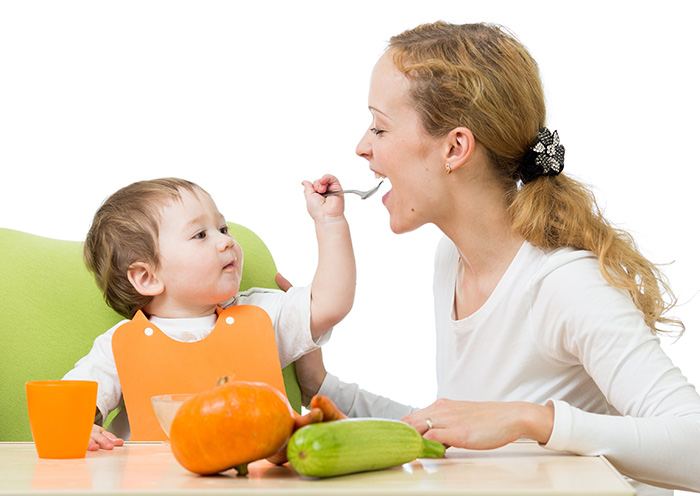
Grain foods
By the time they are eight to ten months old, babies can eat many breads and cereals that the family eats. As they begin to teethe, easy-to-hold baby biscuits can be soothing to sore gums. If allergies are in your family, wait until about ten months to give your baby wheat products.
Moving to table food
After your baby is eating a variety of fruits, vegetables, and grains, you can start giving a variety of foods from the remaining food groups. Some foods that you can offer your older infant include:
- Meats (well-cooked, and milled or very finely cut)
- Eggs (well-cooked and mashed)
- Fish (carefully check for bones)
- Most finger foods, EXCEPT those that could cause choking (like popcorn, nuts or raisins)
- Legumes, like lentils, kidney beans, black-eyed peas, etc.
- Cheese
Do not give honey – even in baked goods – to infants under one year; it can cause botulism poisoning.
As with fruits and vegetables, add only one new food at a time, and wait two or three days to look for an adverse reaction.
Sharing responsibility
Parent’s role
Between about four to six months and one year of age, your baby makes the transition from breastmilk or formula feeding to eating regular meals with the family. During this time, your responsibility is to offer healthy foods that are appropriate for your child’s age, in the order recommended above. And that’s where your job ends. It’s not your responsibility to see that the food is eaten!
Baby’s role
Baby’s role is to decide whether or not she will eat the food you present. If she does choose to eat, she decides how much she will eat. Many parents worry that if they don’t force their babies to eat that their babies will starve. In just about all situations this is not something you need to worry about. Babies and young children will eat when they’re hungry, if we don’t force them to eat.
Children do need to know that food will be available at regular meal and snack times. Then, they generally will eat when they’re hungry and stop when they’re full. If they learn this simple habit, they can avoid problems with eating that are related to obesity or eating disorders later in life.

Making mealtime pleasant for you and your infant
Here are some tips to help you have pleasant meal and snack times with your young child and avoid food “fights”.
Let your child decide
Parents can avoid food battles if they respect their child’s right to eat only as much as they want. Sometimes they won’t even eat at all, if they’re not hungry. That’s okay. Your child will eat at the next meal or snack if she’s hungry.
No more “Clean your plate” demands
Never force a child to “clean her plate.” She will just learn to overeat. This can lead to obesity in some children. It can also lead to unhappy mealtimes for everyone.
Serving dessert
If you serve dessert, give your child a small portion with her meal and let her decide when to eat it. Even if she eats it first, a small portion won’t fill her up. She’ll then go on to eat the other foods based on her hunger. Try it and see… it really works!
Feeding young children can be fun and a challenge at times. Using the information provided here will help you enjoy this most exciting time.



